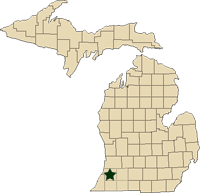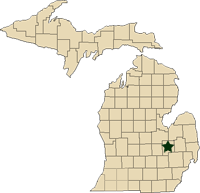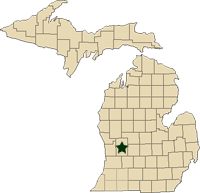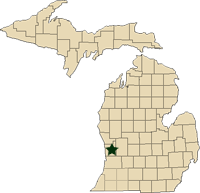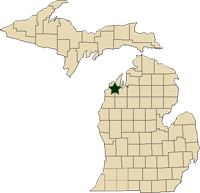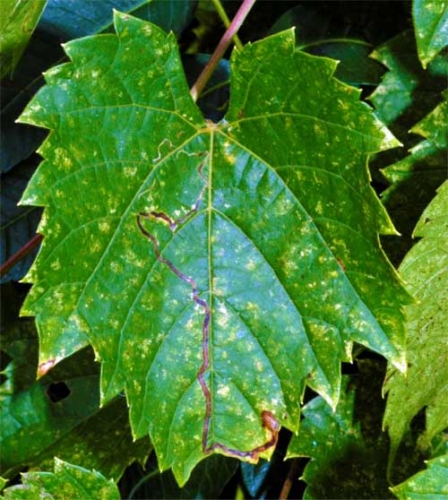Regional reports on Michigan fruit – August 21, 2012
MSU Extension educators’ pest and fruit updates for Michigan.
This week’s regional reports:
- Southwest Michigan - Mark Longstroth, Bill Shane, Diane Brown
- Southeast Michigan - Bob Tritten
- Grand Rapids Area Tree Fruit - Amy Irish Brown and Phil Schwallier
- Grand Rapids Area Small Fruit – Carlos García-Salazar
- Northwest Michigan - Nikki Rothwell and Duke Elsner
Southwest Michigan – Mark Longstroth, Bill Shane, Diane Brown, Michigan State University Extension
|
Weather
Cooler, fall-like weather continued last week. High temperatures fell from the 80s into the 60s and 70s, with heavy morning dews. Storms crossed the region on Thursday (August 16). Rainfall totals ranged from 0.5 to 1 inches. We have received 3 to 4 inches of rain since the beginning of the month and soil moisture levels have been recharged. Plant growth has picked up as plants put out new leaves. Growers are complaining of excess weed growth and the failure of soil active herbicides. Our growing degree day accumulations are over three weeks ahead of normal. Even though we have had abundant heat, the plants are not as far advanced as the high temperature’s lack of moisture caused development to slow down.
|
Southwest Michigan Growing Degree Day Totals from January 1 through August 19 | |||
|
Location |
GDD 42 |
GDD 45 |
GDD 50 |
|
3593 |
3154 |
2470 | |
|
3471 |
3039 |
2358 | |
|
GDD since 8/12/2012 |
162 |
141 |
108 |
Check the MSUE Fruit page at the new MSU Extension site for more information.
Very low levels of brown marmorated stink bug adults were detected in black light traps in southern Berrien County by the Trevor Nichols Research Center. This is the third year this pest has been detected in Michigan. Marmorated stink bugs have caused extensive damage to fruit, vegetable and field crops in many eastern states and are expected to eventually become a major pest in Michigan in a few years. Brown marmorated stink bugs can be confused with other common brown stink bugs found in Michigan. See an MSU Extension News article on identifying brown marmorated stink bugs.
Small fruit
Japanese beetles are still around, but numbers are decreasing. Spotted winged Drosophila (SWD) trap catches continue to increase with cooler temperatures. We can expect a new generation in a couple weeks. This pest has been found in all ripening small fruit except grapes which are only now beginning to ripen.
Strawberry growth is excellent with the moisture and cooler temperatures. Day-neutral strawberry production should pick up soon as well. SWD adults continue to be captured in traps in high-tunnel strawberry plantings at the Southwest Michigan Research and Extension Center (SWMREC), but the number of larvae recovered from fruit has declined. Powdery mildew is present on several varieties. Weed growth in renovated fields has increased with recent rainfall.
In brambles, blackberry harvest will be ending soon. Fall raspberry harvest is underway. Raspberry primocanes are growing well with good soil moisture. Growers report spider mites, Japanese beetles and potato leafhoppers. Spider mites and spotted wing Drosophila are the primary problems in high-tunnel raspberries and blackberries. Female and male SWD have been trapped in increasing numbers in the high-tunnel plantings at SWMREC, and larvae have been found in the fruit. Infested fruit becomes very soft and rots quickly. Larvae can be found in these fruits.
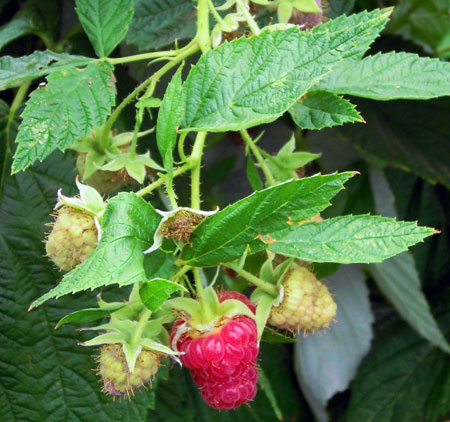
Ripening
raspberries inside a high tunnel to prolong the season.
We continue to see redberry mite damage on blackberries. This is characterized by uneven ripening of drupelets with some turning black and others remaining red. Sunscald has also been found on blackberries with some drupelets drying up.
Blueberry harvest is ending and most growers are finished for the season. Spotted winged Drosophila (SWD) numbers continue to climb and some growers ended their season early because of this pest. Growers with ripening fruit should be checking their fruit. See the Blueberry Insect Scouting Report for August 5-11, 2012, for more information.
In grapes, veraison continues and berry size is increasing quickly. The fourth generation of grape berry moth is expected by Sunday through Tuesday of next week (August 26-28). Check the grape berry moth model at the Enviro-weather website to see the progress of the model for your vineyard. (For more information, see Fourth generation grape berry moth is coming to southwest Michigan.)
Grape berry moth biofix was May 21 for northern Berrien and Van Buren counties and May 19 in southern Berrien County. Grape berry moth trap catches have been low and most infested clusters are found along vineyard borders. The infested clusters ranged from 0 to 14 percent last week in vineyards we scout. Grape disease pressure continues to be low. Recent rainfall and increased humidity will provide more favorable conditions for powdery mildew. Downy mildew will become a problem with the daily heavy dews in August.
Tree fruit
Milder weather with rain has improved the foliage of tree fruit; however, some trees continue to decline as a result of earlier drought and heat stress.
Peach foliage in some sites is still showing nitrogen deficiency symptoms in spite of recent rains. This is due in part to reduced fertilizer applications this poor crop year. Fruit are showing relatively dark coloration and some bleeding into the fruit as a result of earlier warm temperatures.
Rains over the last few weeks have caused skin cracking on some varieties. Varieties ripening now include PF28-007, Fayette and Harcrest. Flavor of peaches continue to be generally very good, although a few varieties seem to have thick, bitter skins. Peach is considered less vulnerable to spotted wing Drosophila, but can be infested if fruit stay on the tree until relatively soft – growers harvesting more mature fruit for direct marketing may need to watch out for this pest.
Cherry leaf spot infections, normally yellowing tops of tart cherry trees by this time of season, are still relatively light. Recent rains have been cherry leaf spot infections.
Plum trees have resumed foliage growth. Varieties now being harvested include Queen Rosa, Satsuma and Vanier. The few surviving fruit are scarred, but tasty. Now is a good time to examine new branches for second generation San Jose scale.
In apples, SweeTango and Silken are being harvested with Gala to start soon. Orchards with harvestable, economic crops should be protected against fruit rots common where frosts and hot weather have caused skin cracks and damaged lenticels. Gala varieties should be checked for pressure and starch levels. Honeycrisp fruit are putting on good size, but have many skin imperfections this year – crop levels vary greatly from tree to tree. Leaves of this variety have been showing mottling for several weeks on trees with light crops.
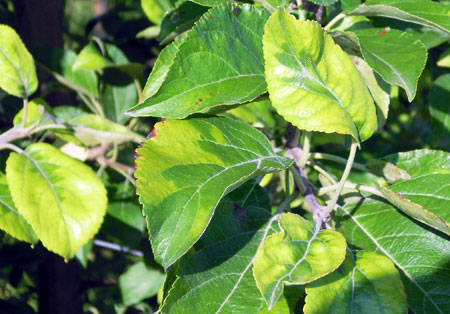
Yellow
pattern common to Honeycrisp leaves.
For apple pests, this unusually warm season means that there will be a third generation flight of codling moth, resulting in larvae. Obliquebanded leafroller feeding on foliage is uncommon. Oriental fruit moth second generation moth flight is continuing at a low level – fruit entries by the larvae can be found. Leaf bronzing from European red mites, two-spotted mites and rust mites is common. Apple maggot fly catch has increased with recent rainfall.
Pear fruit are about 2.75 to 3 inches in diameter on Harrow Sweet. Some brown leaf discoloration due to earlier red mite infections can be seen.
Southeast Michigan – Bob Tritten, Michigan State University Extension
|
Weather
Soil moisture supplies remain adequate at most fruit farms, although some signs of season-long drought stress are just now starting to be seen again at a few farms. Signs of drought stress being seen in the last few days include wilting leaves on newly planted and young tree fruits and fall red raspberries. For farms that received an inch of rain or less over the last two weeks, growers need to be watchful for the resumption of signs of drought stress in their fruit plantings.
The last time we experienced drought to this extent was in 1988, and that year rainfall finally arrived in early August. This year’s drought conditions are more intense than in 1988, as this season is two to three weeks ahead of normal and we have had a much hotter summer. Even with the 3 to 4 inches of rainfall we have received over the last two weeks at many fruit farms, we cannot make up for a dry season with one major rain event. Let’s hope that we continue to get more rainfall over the next few months.
Our early warm season is still running two-plus weeks ahead of normal in terms of growth stages, and with all of the heat of this season we are back to being more than three weeks ahead of normal in terms of degree day totals.
|
East Michigan Growing Degree Day Totals for March 1 to August 20 | |||
|
Location |
GDD42 |
GDD45 |
GDD50 |
|
3432 |
2993 |
2309 | |
|
3385 |
2953 |
2280 | |
|
Flint (Genesee) |
3412 |
2971 |
2296 |
|
3401 |
2967 |
2294 | |
|
3596 |
3150 |
2455 | |
|
3237 |
2809 |
2147 | |
|
3502 |
3063 |
2375 | |
Tree fruits
Apple size has stalled at many farms due to drought stress, with apples approaching 3 inches in diameter. Growers are in a lull in terms of harvest for a week or so waiting for Gala and then Macs to ripen.
Apple maggot trap catch continues, mostly on yellow sticky card traps. We are at a point of the season where apple maggots will go into diapause and, therefore, will no longer be a concern for the rest of the season. Potato leafhopper leaf curling continues to be very common in unsprayed blocks. Many unsprayed apple blocks also have leaf cupping caused by powdery mildew.
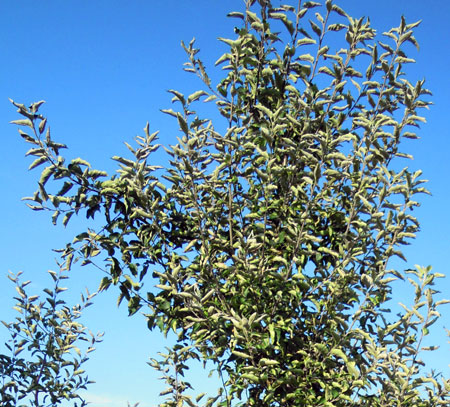
Curling of
apple leaves caused by powdery mildew and potato
leafhoppers.
Codling moth trap catch has remained very low and steady. I am not sure what is going on with codling moth flight and trap catch this season. I had a very strong early trap catch, in fact record numbers at most farms, and then trap catch has been nonexistent for the last seven weeks. I was not able to set codling moth traps in an orchard that ended up with a crop this season, maybe their emergence pattern has changed with no crop.
Japanese beetle numbers continue to drop. Powdery mildew leak cupping is common and infected terminal branches continue to die back in unsprayed apple blocks. A few strikes of fire blight continue to be seen and I continue to see a few larger branches die due to black rot infections in the wood.
Peach harvest of late season varieties will be finishing up in the next week. Fruit size is good where growers have been irrigating, however it is being reduced from drought stress at most farms.
Small fruits
Strawberry fields that were renovated continue to improve with increased leaf growth. Weed control produces do not seen to be working well this season at many farms. Where potato leaf hopper controls have been applied in new berries, plantings look much better with a great deal of runnering taking place, with most rows now filling out.
Raspberry harvest on fall-bearing varieties is finally ramping up at most farms. Most growers report that canes are 1 to 1.5 feet shorter this season. This, too, is related to drought stress. Even where raspberries have been irrigated regularly this season, I am seeing many signs of drought stress.
Spotted wing Drosophila trap catch started to be seen four weeks ago at just a few farms that had trap catch last year, and in the last week I have seen very high trap catch at many farms that had no catch last season. Based on this trap catch, many growers will need to control them this season.
Blueberry harvest has wrapped up at most farms as berry size has diminished due to drought stress at many farms. Growers still picking need to be concerned about monitoring traps closely for spotted wing Drosophila trap catch.
Grapes are starting to color at most farms.
Grand Rapids Area Tree Fruit– Amy Irish Brown and Phil Schwallier, Michigan State University Extension
|
Crop update
The predicted harvest date for Gala on the Ridge is August 22, but there has been no Gala harvest yet. We expect it to begin at any time where there is fruit to be picked, but Galas were hit pretty hard with the spring frosts, so there aren’t many around. McIntosh are scarce, too, and their predicted harvest date is August 27. Honeycrisp will be the next big variety to harvest as there are some to pick. Predicted harvest date for Honeycrisp is August 30 for the Ridge area.
There is bitter pit already showing up in Honeycrisp and other varieties, so keep a close eye for that and do not delay harvest too long. Our growing degree day (GDD) totals continue to be ahead of normal averages by 23 to 30 days, but it seems that the predicted harvest dates for apples are still on target at about 21 days ahead of normal.
Tree fruit pests
Obliquebanded leafroller mid-sized larvae should be easy to find at this time, but they have been very hard to find this year. Numbers were low for the spring larvae and they seem to be even lower for this summer generation. This is being reported all over the state in apples. We expected them to build in number with so many apple blocks with limited insecticide covers this season, but they have not.
Codling moth trap numbers of adult males have dropped significantly on the Ridge according to local scouts and growers. Many report having dropped to zero in the last seven to 10 days. We have accumulated 1,980 GDD50 since the May 3 biofix on the Ridge, and should be nearing the end of egg hatch for second generation codling moth. Remember, even though trap numbers are now zero, the moths activity from about 10 days ago will help you determine if you still need cover sprays – it takes about 10 days from adult activity to get to the egg hatch stage, so don’t be too quick to cut off your cover sprays in blocks you’ve worked so hard to protect this year.
You should follow your own trap numbers for individual blocks, but it is expected we will reach the complete end of second generation codling moth in the last full week of August, depending on your biofix date. The likelihood of a third generation of codling moth is favorable as well and we will continue to check traps into September.
Oriental fruit moth regional biofix was set on April 15 and we’ve accumulated 2,614 GDD45 since then. Third generation egg hatch should be past its peak, but still a few weeks from being over. If you have peaches left to harvest, you need to make sure they are protected from oriental fruit moth at this time. Use your trap catches to make the best decisions for your own blocks.
Japanese beetles are declining across the region as expected.
Apple maggots are flying still in some areas. I see that very few are trapping for this pest this year and in blocks with no fruit, this is fine. However, in blocks with viable fruit, you won’t know what’s going on with apple maggots if you are not looking for it.
Grand Rapids Area Small Fruit– Carlos García-Salazar, Michigan State University Extension
|
Weather conditions have improved with cool days bringing some relief to most small fruit crops. This included some intense precipitations that left more than 2 inches of rain in some places of the region. Currently, all small fruit crops are in harvest with blueberries at the end of harvest in counties south of Allegan County. However, in Ottawa, Muskegon and Oceana counties the harvest of late season varieties continue. For the other small fruit crops, raspberries and strawberries, the change in the weather pattern has improved the crop conditions. Fall raspberries are in full harvest with very good yield and fruit quality. For day-neutral strawberries, the conditions are also very good with harvest in progress.
Major problems observed at this time are related to the presence of spotted wing Drosophila (SWD). For blueberries, this is becoming a serious challenge, especially for growers trying to mechanically harvest the remnants of mid-season varieties like Jersey. Very often berries harvested in fields that presented high populations of SWD during the season are showing fruits infested with larvae. This is causing the rejections of infested loads or being sent for juice with the consequent loss of income for the grower.
In raspberry fields, the situation is similar. Because SWD populations increase dramatically at the end of August, fall raspberries are the most at risk small fruit crop. So far, fields that are in harvest have large populations of SWD adults and, in some cases, fruit with SWD larvae, in spite of weekly applications of insecticide against this pest.
One major reason for concern regarding control of this new pest is its propensity to become resistant to insecticides, especially to pyrethroid insecticides. Because of the multiple generations that SWD produce during the same season, its potential for developing resistance to insecticides is much greater than in other insects. To prevent this, it is necessary that all insecticide applications be conducted only on a monitoring basis – when adult SWD have been detected in the traps or larvae have been found on the fruit. SWD traps should be installed and monitored on a regular basis and fruit being harvested inspected for the presence of SWD larvae.
For information about monitoring and inspection of fruits for SWD infestations, visit the MSU IPM spotted wing Drosophila website or call your local MSU Extension office.
For both blueberry and raspberry growers with fields suffering heavy SWD infestations, fruit should not be left in the field. Growers should try to destroy or dispose infested and spoiled fruit out of the field in the best way possible.
Northwest Michigan – Nikki Rothwell and Duke Elsner, Michigan State University Extension
|
Both day and nighttime temperatures have cooled considerably across the northwest in the past weeks. Daytime temperatures reach into the low 70s and dropped back into the mid-50s at night. Much of the past three days have also been breezy (as of August 21). At this point in the season, we have accumulated 3,278 growing degree days (GDD) base 42 and 2,207 GDD base 50. These accumulations are still well ahead of our 20-plus year averages: 2,732G GDD base 42 and 1,777 GDD base 50.
We have only had one significant rainfall in August that took place August 16, and the Northwest Michigan Horticultural Research Center (NWMHRC) received 0.41 inches of rain. Conditions are extremely dry in the northwest and we are in much need of a good rain. At this time in the season, the NWMHRC has received 16.49 inches of precipitation since January 1.
Crop report
The apple crop continues to look good, but could use some rain to get some size to the fruit. Many of the harvested fruits have been on the small side. Paula Red harvest is underway and local Gingergolds have also hit the farmer’s markets and grocery stores. We did some limited maturity sampling and Galas, Honeycrisp and McIntosh are still a ways off before harvest can be expected. Again, wine grape quality looks terrific so far this season.
Pest report
Cherries. At this point in the season, particularly with the lack of moisture across the region, growers can end their cherry leaf spot sprays. If leaves have been protected up through this time period, the likelihood of keeping leaves on through September is good, particularly if the dry weather continues. The goal is to keep leaves on through September in order to head into the winter with a good amount of reserves in the trees. Keeping as many leaves on the trees is also important as many trees are under drought stress, and minimizing other stresses is crucial at this time.
All insect populations have dropped off this past week. As there is little to no fruit left on the trees, the potential for infestation is very low. We have continued to catch spotted wing Drosophila (SWD) in cherry orchards and we are now monitoring SWD in wine grapes as this crop has yet to be harvested. The adult SWD populations in both cherry and wine grapes are increasing, and these increases follow the statewide trend of catching these flies later in the season, particularly when we have cool temperatures.
Apples. Apple scab is hard to find in regional orchards and the dry weather has been helpful in minimizing the impacts of this disease as we approach harvest. However, if we do receive rainfall in the coming weeks, growers will want to be sure to be covered up going into the rain event.
Again, all apple insect populations are down in our traps this week. Droughty conditions may be reducing insect numbers, but growers need to continue to trap for pests that can infest fruit as it ripens: codling moths, obliquebanded leafrollers and apple maggots. Early apple harvest has begun across the region for those growers with a crop.
Grapes. Fruit development is coming along nicely with some good color development thanks to cooler evening temperatures. There is already bird damage and insects like paper wasps and bees visiting ripening fruit of some very early cultivars. I have seen vineyards with a good deal of marginal leaf reddening at places in the canopy where shading foliage had been removed by hedging. In several cases, the most affected leaves were also curled or cupped downward, most likely from past potato leafhopper feeding injury. This may be a sunburn effect on leaves that were suddenly exposed to bright sun and heat following hedging.
Managed vines are still in great shape in all the places examined this week. Grape berry moth infestations are low in most sites. Defoliation by hornworms is nearly over for the season. Potato leafhoppers and whiteflies were common in a few sites. This has been a good year for stippling species of leafhoppers on wild grapevines in woodlots; where cultivated vines are close by, there are cases of minor stippling injury on the cultivated vines. This injury is of no concern.
Adults of spotted wing Drosophila (SWD) were trapped near vineyards on Old Mission Peninsula during the past week. This is a potential pest of grapes, but the importance of this insect in our area is yet to be determined. Stay tuned to the FruitNet or the Michigan Grape and Wine Industry Newsletter for further developments on SWD.
Powdery mildew is still hard to find in most northwest vineyards. At this time, good canopy management and leaf pulling in the fruiting zone is equally as important as fungicide spray applications. With the pace of fruit ripening this season, growers really need to get the leaf pulling done soon so that bird netting can be deployed on time.



 Print
Print Email
Email